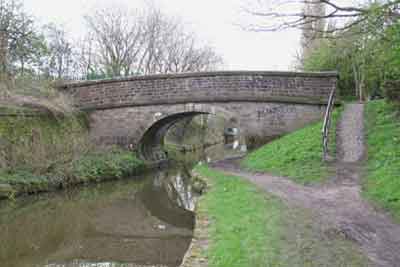
Introduction
Chartism was a working-class movement whose aim was to reform Parliament to permit working men to be represented in Parliament.
As a consequence of this movement there were riots in 1839, 1842 and 1848 that were instigated by Parliament's rejection of three Chartist petitions.
The riots of 1842 were mainly in the industrial areas of the North West, the Midlands and South Wales, the latter being known as the Rebecca Riots.
In the North West, the riots commenced as a protest against wage cuts and these were swiftly taken up by Chartist leaders with the aim of causing a general strike
that would carry on until the 'People's Charter' became law. In Staffordshire they were known as the Plug Plot Riots because of the policy of removing boiler plugs
to bring factories to a standstill. Manchester and industrial towns to its southeast was a specific centre of attention with strikes,
meetings and processions in Ashton-under-Lyne, Dukinfield, Glossop, Hyde, Manchester, Mottram, Stalybridge and Stockport.
There were instances of railways being disrupted but the Peak Forest Canal was singled out for special attention, as it was considered to be an important industrial route.
For that reason, the canal (and the mills alongside it) received particular attention by the rioters and it is believed to be the only occasion that a canal was attacked in this way.
Replicated below are newspaper reports recording the disruption to the Peak Forest Canal.
The year 1842 is believed to be the first year in which the Government used the then new railway system to move troops for the purpose of maintaining public order and this is how it was recorded:
The article below describes how a riot, commencing in New Mills, disrupted the working of the Peak Forest Canal, especially around Bugsworth Basin and the canal company's quarries. It also records how local industry was disrupted.
Note: In the first and third press cuttings below there is confusion about the names (and spelling) of the three persons alleged to have destroyed lock gates somewhere on the Marple flight of locks in order to disrupt the movement of boats along the Peak Forest Canal.
The report below described the Chartists as a mob and it stated that the men in charge were Joseph Taylor of Marple Bridge and Christopher Doyle of Manchester.
The above report suggests that it was the single lock gate at the head of the lock that was damaged.
There was also a disturbance at nearby Shepley's Bridge and Shepley's Mills on the Macclesfield Canal. An account of what happened was given to the court by William Moore, a Dresser at Shepley's Mills:
A mob of around 250 strong was assembled on and around the bridge where they demanded that all hands be turned out of the mills. In response to their demands, Mr James Shepley, the mill master, stopped all work and turned out all the hands, which numbered about 500 or 600 persons.
Shepley's Mills were situated on the offside of the Macclesfield Canal immediately beyond Shepley's Bridge where there was a also a wharf. Shepley's Mills were sometimes referred to as Rhode Mills on account of two mill masters, Shepley and Rhodes, being related. Rhodes also had a mill in the Glossop area.
Roll of the 59 defendants
| AIKIN, Wiiliam ARTHUR, James, alias McARTHUR ALLINSON, John ARRAN, John BAIRSTOW, John BROOKE, Robert BEESLEY, William BROPHY, Patrick Murphy BOOTH, William CAMPBELL, John CARTLEDGE, James COOPER, Thomas CLARKE, Joseph CHIPPENDALE, James CHALLENGER, Alexander CANDELET, George CROSSLEY, John DOYLE, Christopher DURHAM, John FLETCHER, John | FRASER, Thomas FENTON, James GRASBY, James HARNEY, George Julian HILL, William HOYLE, John JOHNSON, George LEACH, James LEACH, John LOMAX, John LEES, Robert LEWIS, John McDOUALL, Peter Murray McCARTNEY, Bernard MASSEY, John MAHON, Thomas MOONEY, James MORRIS, David NORMAN, John O'CONNOR, Feargus | OTLEY, Richard PARKES, Samuel PILLING, Richard PITT, Thomas ROSS, David RAILTON, Thomas RAMSDEN, Robert SCHOLEFIELD, James SCHOLEFIELD, William SMITH, Thomas Browne SKEVINGTON, James STEPHENSON, William STORAH, Thomas TAYLOR, Frederick Augustus TAYLOR, James THORNTON, John WOOLFENDEN, Albert WILDE, John WOODRUFFE, William |

Shepley's Bridge on the Macclesfield Canal at Marple looking south, Apr 2012.
On the 10 Aug 1842, this bridge was the scene of Chartist unrest when a mob of around 250 strong descended upon Shepley's Mills and congregated on and around Shepley's Bridge.
Here they were met by Mr Shepley and a number of his workers who were told that, 'We want all the hands turned out of the mills.' Therupon, Mr Shepley stopped the mills and turned out 500 or 600 workers.
Further Reading
Manchester Guardian, 17 Aug 1842, pp. 1-2.
Haywood, A (Manchester) and Cleave, J (London): 'The Trial of Feargus O'Connor (barrister-at-law) and fifty-eight others on a charge of sedition, conspiracy, tumult and riot' (1843).
Gammage R G: 'History of the Chartist Movement 1837-1854' (1854).
Hovell, Mark: 'The Chartist Movement' Manchester University Press & Longmans, Green & Co, 1925).
Mather F C: 'Public Order in the Age of the Chartists' (Manchester University Press, 1959).
Pavasovic, Milan: 'No Mean City, A History of Dukinfield' (Neil Richardson, pp. 26-29, 1984).